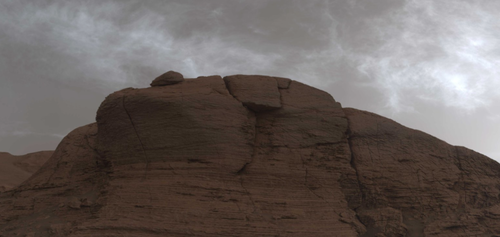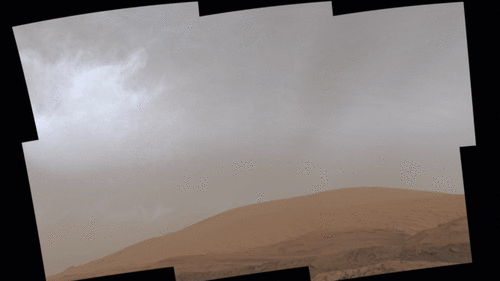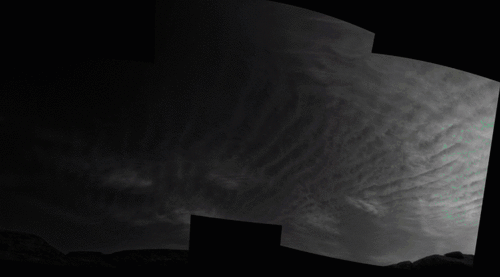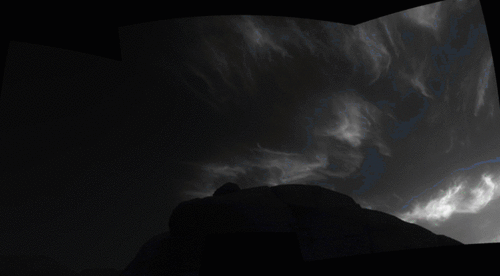NASA’s Curiosity Rover Captures Stunning Martian Clouds
NASA’s Curiosity rover captured a stunning snapshot of what appears to be a cloudy day in the Arizona desert, but this picture is actually a cloudy day on Mars.
NASA’s Jet Propulsion Laboratory (NASA JPL) released multiple images documenting cloudy days in the thin, dry atmosphere of the Red Planet.
“Clouds are typically found at the planet’s equator in the coldest time of year, when Mars is the farthest from the Sun in its oval-shaped orbit. But one full Martian year ago – two Earth years – scientists noticed clouds forming over NASA’s Curiosity rover earlier than expected,” NASA JPL’s press release read.
Curiosity has taken about 21 photographs of the strange Martian clouds over Gale Crater.
This year, they were ready to start documenting these “early” clouds from the moment they first appeared in late January. What resulted are images of wispy puffs filled with ice crystals that scattered light from the setting Sun, some of them shimmering with color. More than just spectacular displays, such images help scientists understand how clouds form on Mars and why these recent ones are different.
In fact, Curiosity’s team has already made one new discovery: The early-arrival clouds are actually at higher altitudes than is typical. Most Martian clouds hover no more than about 37 miles (60 kilometers) in the sky and are composed of water ice. But the clouds Curiosity has imaged are at a higher altitude, where it’s very cold, indicating that they are likely made of frozen carbon dioxide, or dry ice. Scientists look for subtle clues to establish a cloud’s altitude, and it will take more analysis to say for sure which of Curiosity’s recent images show water-ice clouds and which show dry-ice ones. – NASA JPL
This GIF shows clouds floating over Mount Sharp on Mars. The rover took these photos in mid-March.
In late March, the rover took more photos of clouds just after sunset.
Another GIF of Martian clouds after sunset about 37 miles in the sky and are primarily composed of water ice and sometimes offer a colorful display.
“If you see a cloud with a shimmery pastel set of colors in it, that’s because the cloud particles are all nearly identical in size,” said Mark Lemmon, an atmospheric scientist with the Space Science Institute in Boulder, Colorado. “That’s usually happening just after the clouds have formed and have all grown at the same rate.”
“I always marvel at the colors that show up: reds and greens and blues and purples,” Lemmon said. “It’s really cool to see something shining with lots of color on Mars.”
Curiosity landed on the Red Planet in August 2012 and is still operating. The rover was designed to explore the Gale crater as part of NASA’s Mars Science Laboratory mission. What’s been grabbing all the headlines this year has been NASA’s Perseverance rover and the tiny robotic, coaxial helicopter Ingenuity, which landed on the planet in mid-February. Also, China landed its rover on the plant weeks ago.
Mars is becoming a highly focused planet because it contains many valuable resources, including rare metals, that have ignited a new rush by global superpowers to conduct future space mining missions. Before Mars is mined, the Moon will likely experience mining operations first.
Tyler Durden
Sat, 05/29/2021 – 11:35
via ZeroHedge News https://ift.tt/2RUeh6q Tyler Durden





